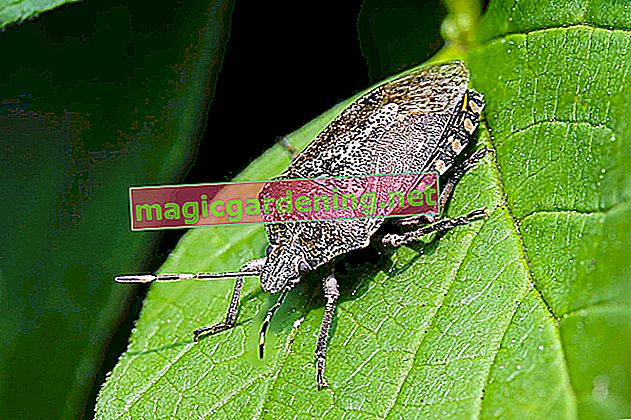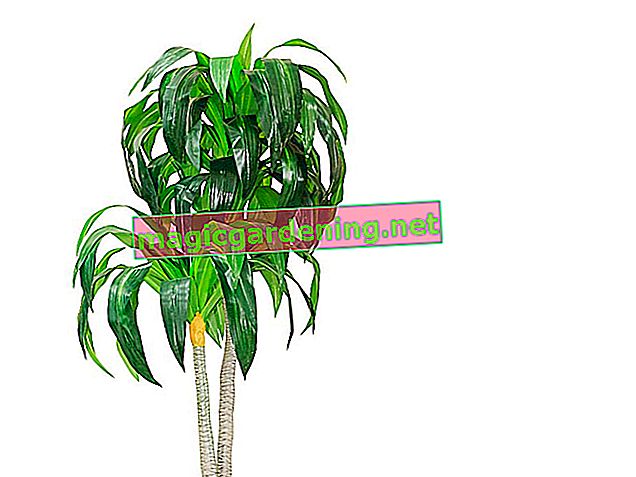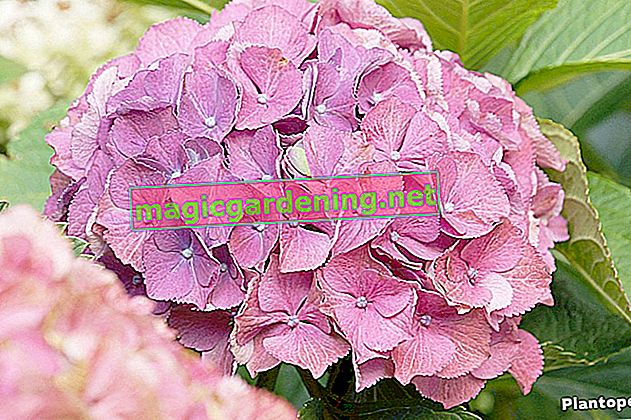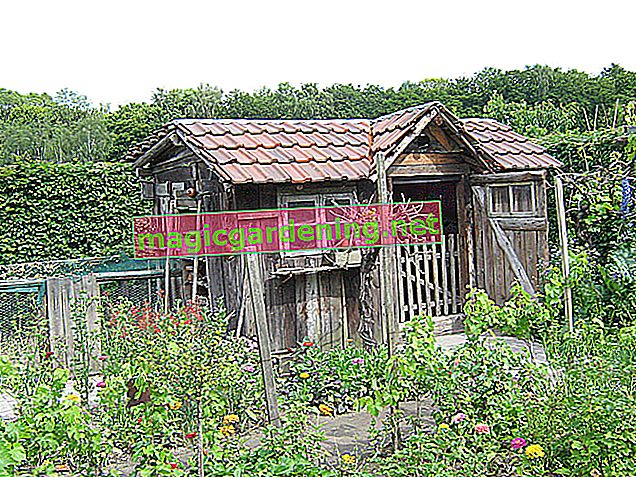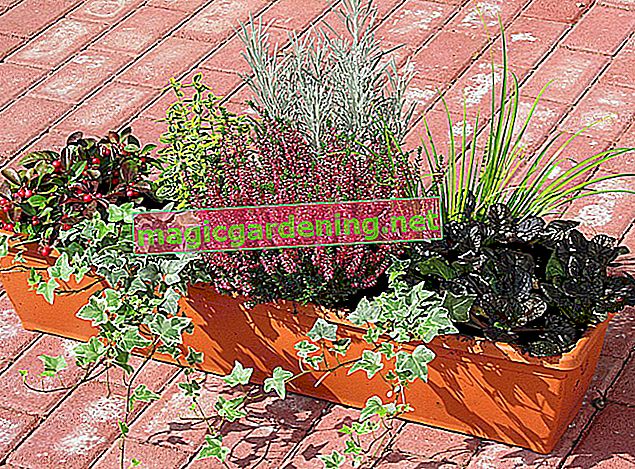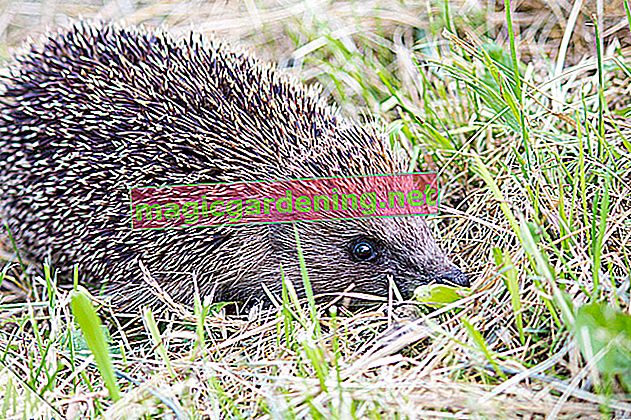
the essentials in brief
- Hedgehog droppings are shiny black-brown and up to 6cm long
- If the hedgehog is healthy, the hedgehog droppings don't smell too intensely
- Hedgehog droppings can transmit diseases and parasites such as salmonella or leptospira and cause fungal skin infections
What does hedgehog droppings look like?
Everyone is familiar with the hedgehog's appearance. From childhood on, the cute spiny animals arouse great emotions that even hard-boiled adults cannot ignore. Direct encounters with the shy, nocturnal animals are rare. An important indicator of the presence of hedgehogs in the garden is their legacy. The question arises about the appearance of hedgehog droppings in order to rule out disappointing misjudgments. This is what the hedgehog solution looks like:
- Length : 3 to 6 cm
- Thickness : 8 to 12 mm
- Color : glossy black to dark brown
- Shape : rolled with pointed ends
also read
- How to recognize angelica and distinguish poisonous plants
- Differentiate maple species by their leaves - this is how it works
- This is how hedgehogs overwinter in your garden - tips for the right winter quarters
If you take a closer look, you can sometimes see the remains of exterminated insects in the sausages. In particular, indigestible chitin segments from beetles can be contained in the solution. Fruit kernels only end up in the excrement when the insectivores have rummaged through ripe fruit for juicy maggots. As a rule, hedgehogs disdain vegetarian food.
Here you can watch the hedgehog defecate:
YoutubeWhat should hedgehog droppings look like?
On the one hand, excrement is a meaningful indication of the respective animal species. On the other hand, animal remains serve as an important indicator of the state of health, especially if you cannot look at the animal. Have you identified hedgehog droppings by their appearance and do you want to make sure that they are healthy? The following table compares the properties of healthy and sick hedgehog solution:
| Hedgehog droppings comparison | healthy | ill |
|---|---|---|
| colour | glossy black to dark brown | green to light green |
| shape | cylindrical | misshapen, undefined |
| consistency | mostly solid | soft, slimy |
| odor | noticeable, but not unpleasant | smells like hell |
If the appearance of hedgehog droppings indicates a sick animal, please contact a hedgehog sanctuary or a veterinarian. The experienced experts are grateful for any indication of a hedgehog in need and will advise you on how to proceed. Please do not catch a hedgehog on suspicion. All hedgehogs are under protection and must not be disturbed or taken out of their living environment without good reason.
Digression
Milk causes diarrhea
There are numerous myths and legends about the diet of hedgehogs. It belongs in the land of fables that hedgehogs carry fruit on their prickly backs. The animals are neither vegetarians nor do they operate a stock economy. A common mistake leads animal lovers to set up bowls of milk. This well-intentioned gesture leads to massive torment for thirsty spiked balls, because hedgehogs are lactose-intolerant. If the animals drink milk, they suffer from nausea, vomiting and diarrhea. The better thirst quencher is fresh water that is served to the cute gardeners in shallow bowls.Differentiate hedgehog droppings
In the near-natural garden, small animals living in the wild give each other the handle. Rigorous avoidance of pesticides, varied garden design with mixed hedges, piles of leaves, wild perennials and dry stone walls magically attract wild animals. To distinguish welcome hedgehogs from unwanted guests such as martens and rats, their excrement provides important information. The following table lists typical distinguishing features:
| Distinguishing features | Hedgehog droppings | Rat droppings | Marten droppings | Dormouse droppings |
|---|---|---|---|---|
| size | 3-6 cm long | 1-2 cm long | 8-10 cm long | 1-2 cm long |
| shape | cylindrical, tapering to a point | tapered spindle shape | as thick as a pencil, twisted tip | bean-shaped |
| colour | black to dark brown, shiny | dark brown | black to gray | dark brown |
| odor | barely noticeable, no smell | for ammonia | unpleasant smell | weak, not penetrative |
| consistency | firmly | soft, sticky | visible food residues | wet from urine |
The distinguishing features mentioned apply to the excrement of healthy animals. If the excrement is slimy, soft, light green to green and smelly, all attempts at identification based on visual clues will come to nothing. If the appearance does not provide information, microbiologists shed light on the problem. Special laboratories for fecal analyzes determine which animal is involved on the basis of samples sent in.
Tips
The last doubts about an accurate identification of hedgehog droppings clear the world. The online editorial team of the Professorship for Wildlife Ecology and Wildlife Management in Freiburg publishes detailed photos at “wildlife.uni-freiburg.de. On the website of the Austrian hedgehog sanctuary “igelinnot.at” you can see meaningful pictures of the appearance of hedgehog droppings from sick animals.
Is hedgehog solution dangerous?
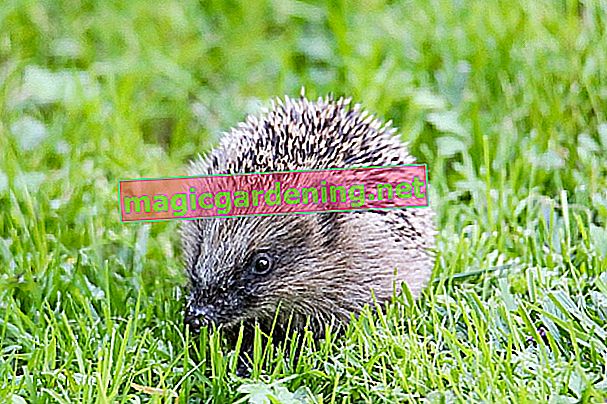
As wild animals, hedgehogs naturally have parasites and bacteria in their luggage without necessarily being sick themselves. These include external parasites, such as fleas, and internal parasites alike. These pathogens can also spread to humans and pets via the faeces. Salmonella or leptospira, for example, make no difference which organism they are infecting. Furthermore, unpleasant fungal skin infections lurk if you come into direct contact with the excrement.
As a result, careful hygiene is the top priority when dealing with hedgehogs and their legacies. Always wear gloves, wash your hands with soap and disinfect equipment that has come into contact with hedgehog droppings. Do not dispose of the excrement on the compost, as pathogens could spread through this path in the garden.
Remove hedgehog droppings
Where hedgehogs do each other, excrement testify to their presence. The prickly visitors are most welcome, but their legacies are not. For hygienic and aesthetic reasons, hedgehog droppings should be removed promptly. First and foremost, there is a risk of germs, parasites and other contaminants that are harmful to health. After all, hedgehogs are wild animals that do not receive any medical care. How to remove hedgehog solution from paved and unpaved areas, read here:
Clean paved surfaces
Hedgehogs often do their business on patios, garden paths and paved areas if there is a feeding station there. It is all the more important to be meticulous clean, because there are sometimes several hedgehogs cavorting there. How to remove hedgehog droppings from solid ground:
- Take the cat litter scoop in hand
- start at the front of the excrement
- Slide under the solution and lift
- If necessary, press the shovel with a wooden board or a brush
- Pour the manure into an organic or paper bag and dispose of it in the household waste
As an alternative to the cat litter scoop, you can remove the hedgehog solution using a puke tongs. The special pliers consist of two gripping arms with which you can remove all kinds of animal excrement from the paved surface. The collected fecal sausages of a hedgehog can be thrown directly from the receiving device into a bag and disposed of in the residual waste.
Remove from unpaved surfaces
Hedgehogs scurry enthusiastically over green spaces and flower beds at night in search of delicious prey. The prickly hunters not only leave small holes in the lawn, but also their droppings. What can be done easily on solid ground with a shovel or puke tongs requires a modified procedure on lawn, meadow or earth. This is how it works:
- Put on disposable gloves
- Pick up excrement
- Take off the glove and knot the manure
- Dispose of in household waste
Finally, pour water over the cleaned area and clean your hands with a disinfectant.
frequently asked Questions
Our dog eats hedgehog droppings - what to do?
Hedgehog droppings pose a health risk to dogs because they can contain parasites and pathogens. Furthermore, it indicates a profound behavioral disorder if a dog attacks hedgehog solution or other excrement. The first step is to consistently remove the legacy of the hedgehog before you let your dog out in the garden. In the second step, please consult a trusted veterinarian to get to the bottom of the unnatural behavior and, if necessary, conduct behavioral therapy or anti-faecal eating training.
How do I recognize hedgehog droppings straight away?
Two visual characteristics leave no doubt that it is hedgehog droppings in the garden, on the lawn or on the terrace. Excrement from a healthy hedgehog is deep brown to black. Furthermore, the remains are in the form of small sausages with a maximum length of 6 centimeters. Just hold a match next to it for comparison.
How can I tell if it's hedgehog or rat droppings?
The shape and size of excrement provide important clues as to whether you are dealing with hedgehog or rat droppings. Hedgehogs leave 3 to 6 centimeters long sausages, mostly cylindrical and tapering to a point. Solution from rats, on the other hand, is round to oval and significantly smaller at 1 to 2 centimeters. Another indicator is the location. Rat droppings are mostly distributed along a wall or wall. Hedgehogs prefer green areas, beds, paved paths or terraces when using the toilet.
Should I add wormers to hedgehog food to reduce the risk of infection from feces for my family?
An amateur parasite treatment on healthy, free-living hedgehogs can have fatal consequences for the animals. In fact, most hedgehogs live in natural equilibrium with indoor parasites. If, on the other hand, there are health problems in combination with slimy, green excrement, veterinarians first carry out a fecal analysis and only then decide on deworming. Giving a drug to wild hedgehogs on suspicion often does more harm than good. Furthermore, hedgehogs will quickly catch new parasites in the wild anyway.
We actually like hedgehogs. However, a brazen, prickly guy littered our seat every night. Can we drive the hedgehog away?
Hedgehogs are protected wild animals. Among other things, it is forbidden to capture a hedgehog for the purpose of relocation. Please make sure in advance that the “culprit” is actually a hedgehog. Hedgehog droppings are 3-5 centimeters long, have the shape of a sausage and are dark brown to black. So that the uninvited guest stays away from your seat, you should feed your dog or cat in the house from now on, because the feeding bowls magically attract hungry hedgehogs. A 50 centimeter high fence is also helpful to lock out night visitors.
Tips
Fresh hedgehog droppings in the winter garden indicate an animal in need. Hedgehogs torn out of hibernation or awakened too early are at risk of starvation. In this exceptional case, feeding is not only allowed, it is essential for survival. Establish a cat-safe feeding station until it stops freezing and natural food sources open up.


